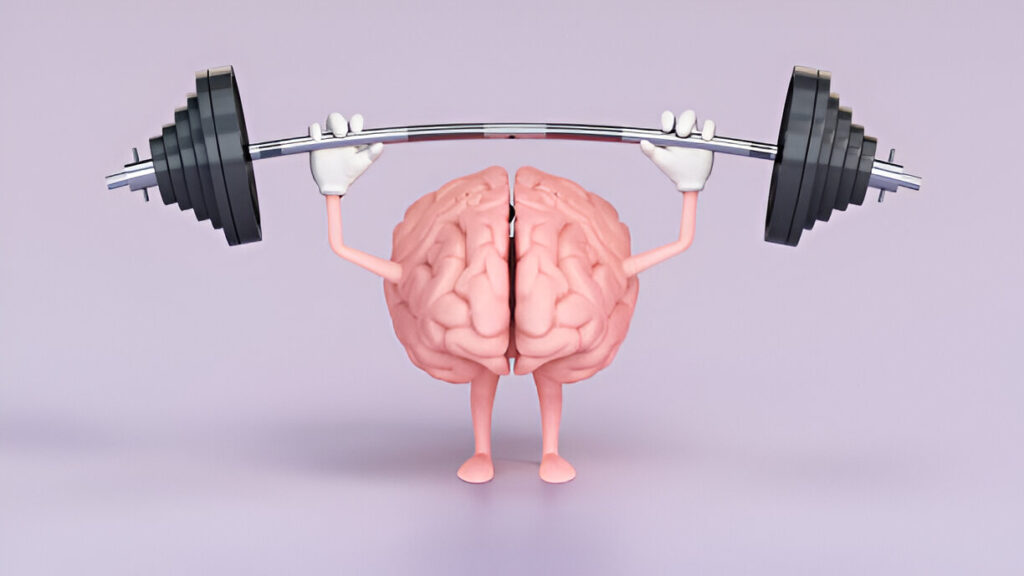1. Mindful Breathing Stay grounded within the current instant
Introduction to Mindful Breathing
You can strengthen your mental health and your ability to stay present through mindful breathing. Our demanding environment and myriad distractions force people to face steady challenges with staying present in the current moment.
Dedicated mindful breathing practice trains your mind to remain calm while lowering stress levels and improving mental health performance. The process goes beyond mere breath awareness, opening access to emotional equilibrium and personal self-perception.
What Mindful Breathing Means
Mindful breathing demands that you notice how your breathing organs function while inhaling and exhaling air in your system. With its straightforward design, mindfully directed breathing acts as a base to center your thinking within the present moment.
This breathing technique needs only your essential resources to practice without any tools. To practice mindful breathing, all you need is a peaceful environment and a minimal amount of your time.
During breath focused exercises, you build a mental sanctuary that removes thoughts about the past and future from your mind.

The Science Behind Breathing
Studies indicate that dedicated breathing exercises transform into significant mental wellness advantages. Regular practice weakens your body’s stress response, yet your parasympathetic nervous system awakens.
You can achieve reduced cortisol levels, improved heart rate variability, and enhanced emotional regulation control through mindful breathing techniques. Your ability to connect with the present moment improves when your brain connects with your body through conscious breathing practice.
Why It Helps Mental Health
Mindful breathing exercises perform exceptionally well at helping people manage depression and anxiety. Your attention on breath breaks the mental distress cycle commonly found during mental health challenges.
This brief space gives you clarity and then shields your mental process from descending into damaging thought sequences. By practicing mindful breathing, you develop self-compassion because it creates time to experience your emotions with acceptance and without criticism.
Practicing Anywhere, Anytime
The main benefit of mindful breathing arises from its adaptability across all situations. You can perform this anywhere, including during desk time, bed moments, and standing in queues. By directing your focus toward your respiratory activity, you are ready to practice.
Breathe deeply through your nostrils before sustaining this inhalation, then slowly release your breath through your mouth. These few movements will provide the stability you need to remain in your present moment regardless of location.
Overcoming Initial Challenges
Newcomers often find mindful breathing hard to practice right after they start. Your thoughts frequently drift away, so maintaining mindfulness usually feels challenging. However, this is entirely normal.
You should always use gentle breathing to redirect your attention toward your breathing whenever thoughts distance you from your practice. Through regular practice, your mental health improves as well, and your present-moment attention strengthening capabilities develop.
Making It a Daily Habit
Adding mindful breathing sessions to your daily schedule needs minimal effort because the practice demands minimal dedication. Begin your routine by dedicating five minutes to breathwork and build up from there until you reach longer sessions easily.
You must establish a regular practice to achieve lasting mental health advantages because consistency is essential. Regular practice will give you a more profound sense of tranquility and better capabilities to deal with stressful circumstances.
Stay Grounded
Mindful breathing is a complete mental health solution because it firmly roots you in the present moment. A focused mind on breathing helps you discover peace within, along with the strength to handle life’s difficulties.
The simple breathing method of mindful breathing enables you to overcome stress management while effectively controlling anxiety and finding self-introspection without complexity. The practice starts now so you can witness transformational positive effects on mental wellness.
2. Gratitude Journaling
Walking with appreciation brings forward your mental state and mental clarity, particularly in this present moment lifetime, through present-centered orienting and living
Introduction to Mindful Breathing
Thunder breathing enables you to develop attention toward the present while creating mental health strength. People who want to stay present must overcome continuous hurdles while attending to numerous distractions in modern life.
Thankfully, mindful breath techniques help your brain learn relaxation skills and lower stress levels while strengthening your mental health across every domain. Breathing awareness practices create a pathway for understanding mental states and observing personal identity through their dual function.

What Mindful Breathing Means
Breathing practice requires you to watch how your organs help the body complete each breath cycle between inhaling and exhaling. The breathing procedure is an anchor that preserves continuous mental consciousness of present circumstances.
You only need standard equipment and minimal basic requirements to practice this minimalistic breathing technique.
A peaceful setting combined with a short duration defines the fundamental needs for this breathing practice. Bearing focus on breathing through exercises enables you to build internal defensive forces that block outside thoughts about past and future occurrences.
The Science Behind Breathing
Scientific evidence shows that controlled breathing exercises substantially benefit mental wellness. When practised daily, your body learns to minimize stress reactions while activating the vital parasympathetic nervous system.
Breath based techniques regularly decrease stress hormones, improving emotional regulation, heart rate variability, and controlled responses. The transition into present focus becomes successful because your brain produces a connection with your body through intentional breathing sessions.
Why It Helps Mental Health
Value-driven achievements through mindful breathing practices lead individuals to overcome depression and anxiety management requirements. Intentional breath observation breaks the recurring negative mental loops which affect people with mental health conditions within stressful situations.
Mindful breathing establishes a symptom free mental state to provide clarity and prevent negative thinking patterns from entering your mind. Self compassion improves through responsible breathing because you learn to accept whatever emotions come your way regardless of duration.
Practicing Anywhere, Anytime
Experienced practitioners understand the ability of mindful breathing to function in every situation. You can practice this mindfully whenever your day demands during your work hours and sleep hours as well as in queues.
When you direct your attention to your breathing cycles, you transition into readiness mode. Inhale through your nose powerfully before retaining the air and allowing a gentle, controlled air release through your mouth.
The three fundamental movements will help you develop stability for maintaining focus regardless of where you find yourself.
Overcoming Initial Challenges
People who start learning mindful breathing experience initial hurdles in their regular practice. You must practice steadily because your thoughts will naturally drift away from focus. However, this is entirely normal.
You should regulate your breathing rhythm when thoughts disturb your focus so you can return your conscious awareness to your breathing schedule. The benefits from regular practice extend to your mental state while enabling gradual present moment attentiveness.
Making It a Daily Habit
The ability to fit mindful breathing sessions into daily routines has low scheduling demands based on how little practitioners need to dedicate themselves to the practice. Your daily regimen requires five minutes of breathing exercises as an essential base for extending it into expanded sessions.
Continued mental health improvement requires consistent practice since daily persistence brings maximum benefits. Emotional relaxation becomes accessible through structured breathwork practice and expanded resilience to critical events.
Stay Grounded
Taking part in mindful breathwork creates a complete mental wellness solution by allowing you to remain focused in the present moment. Paying attention to your breath during each daily challenge will reveal hidden inner strength.
Learning mindful breathing teaches you how to manage stress through an effective anxiety control system that enables simple exploration of your inner thoughts. Breathing techniques initialize directly to deliver immediate improvements in mental wellness.
3. Progressive Muscle Relaxation Relieve Tension, Feel at Ease
Understanding Progressive Relaxation
Progressive muscle relaxation is a powerful mental health technique that lets people reduce their tension levels and gain inner serenity.
Gradually tightening your muscles from feet upwards as you release tension throughout all your muscle groups allows you to produce complete physical and mental relaxation.
Progressive muscle relaxation educates you about body signals, which promotes mindfulness throughout the present. The approach supports peaceful thinking and gentle reactions to promote solid mental wellness.

The Connection to Mental Health
Your bodily sensations directly correlate to mental states happening within your mind. You can reset your mind through steps that start by calming your physical body states according to progressive muscle relaxation.
This relaxation technique activates your body’s natural stress reduction system, decreasing stress hormones, distress symptoms and anxiety.
Each muscle group movement in this therapy frees your physical tension while you discover techniques to manage your mental health state better. Utilizing these techniques teaches you to control your stress while building emotional resilience.
How It Works
The core idea behind progressive muscle relaxation therapy depends on detecting and understanding body states and recognizing their differences. Detecting muscle tension changes becomes easier as you develop muscle awareness through sequence-based muscular tensing and relaxing approaches.
Through this practice, you learn to detect bodily stress points that were previously undetectable to your self-awareness.
A systematic guided protocol of muscle release throughout your body will guide you toward total physical tranquillity and mental relaxation. Through practical application, this practice leads to notable mental wellness transformations.
The Benefits of Practice
Progressive muscle relaxation creates enduring benefits beyond its essential capability to reduce stress. Practising this method produces superior nighttime sleep quality, decreased body discomfort, and increased stable emotional processing.
Making this exercise for mental health an integral part of your life develops stronger connections among people who better handle varying life challenges. This protocol provides immediate relief from tension yet simultaneously builds your capacity for lasting mental stability and clear thinking.
A Tool for Mindfulness
Glass-glass relaxation methods lead to an efficient mindfulness routine combining enhanced physical performance and mental concentration abilities. Following the direct observation of muscle sensations allows your mind to step away from jumping thoughts.
Utilizing this method will maintain your attention on the present to restore peaceful mental clarity in every instant. With improved stress management skills, your mindfulness abilities continue to improve.
Incorporating It Into Life
The main virtue of progressive muscle relaxation stems from its ability to suit individual requirements. The exercise remains valuable for all situations because you can practice it anywhere from your house to your workplace and momentary daily pauses.
4. Visualization Techniques Picture Your Way to Inner Calm
Understanding Visualization
The power of your mental imagination enables Visualization to produce emotional balance through an exercise technique that cultivates inner calm. Visualizing clear mental images lets you pull your attention away from stress and become absorbed in serene mental environments.
Simple visualization methods are powerful because they provide relaxation tools, mindset centring abilities, and mindfulness development. Visualization is a transforming skill that promotes emotional and mental clarity and resilience.

The Mind-Body Connection
These visualization techniques facilitate results by accessing elements between mental processes and physical reactions in human experience. Your brain interprets imagined calming scenarios and positive outcomes precisely like when experiencing genuine events.
Your nervous system receives the relaxation signal, which triggers a hormonal decrease and calms your body of stress. Visualization lets you restore your mind to experience problems more easily with relaxation and confidence.
The images you imagine guide you toward inner tranquillity, allowing healing processes and personal development to take root in your mind.
How Visualization Relieves Stress
People usually develop stress because their minds repeatedly spin out of control while continuously projecting adverse outcomes. You can use visualization techniques to move your thoughts towards peaceful, beneficial mental images that counteract anxiety.
When you use Visualization to imagine yourself sitting in a peaceful natural location, you experience tranquillity and relaxation.
Mental distractions turn into present-moment focus once you shift your perspective, which then enables emotional control while breaking free from anxious feelings. Visualization serves more than simple pleasure because it allows for cognitive reframing.
Creating Your Mental Sanctuary
A mental sanctuary is one of the best methods for learning visualization skills. Your mental sanctuary inside the imagination presents a location that offers feelings of security, tranquility, and peacefulness.
Any spot within your sanctuary serves as a personal refuge to escape from the pressures of daily life, whether it’s the peaceful ocean, verdant woods or warm interior privacy.
Regular visits to your mental space help build your stress resilience and improve your complete mental wellness. Visualization techniques allow you to discover the harmony between yourself and the present moment.
The Role of Focus
Visualization activities demand your full attention to calm turbulent thinking patterns and develop a conscious state of awareness. Guided concentration on sensory elements brings you deeper into your visualization experience by activating the senses to perceive colours, sounds, and bodily feelings in the imagined world.
The purposeful nature of repetitive practice strengthens your ability to stay mentally present, which fights distractions while improving mental clarity. Through visualization practice, you develop inner self-awareness and relaxation benefits.
Using Visualization Daily
You can experience multiple benefits from adding visualization exercises to your regular daily schedule. Apply visualization sessions during morning routines to create daily positivity or at nighttime to help you calm down before sleeping.
Brief visualization sessions create substantial positive changes for your mental wellness. Developing Visualization as a regular practice results in a potent resource you can use to keep your emotional balance strong when facing life obstacles.
Overcoming Initial Challenges
Experts believe beginners struggle with focusing during Visualization and developing strong visualization skills. The practice of Visualization requires development and leads to noticeable progress.
Your journey with Visualization starts with basic visualization practices and step-by-step exercises until you become capable of focused imaging.
With the repetition of these mental health exercises, your ability to concentrate grows to the point where you can easily visualize your path to tranquility. Allow yourself time to adapt toward acknowledging a calmer state of mind.
The Lasting Benefits
Through Visualization, you gain advantages that stretch beyond immediate stress relief. Regular use of visualization methods develops your mental health by enhancing positive thought processes, regulating emotions, and fostering well-being.
Your mental resilience and adaptability will improve as you put mental effort into visualizing personal peace. Learning to visualize brings lifelong benefits that develop your emotional growth and mental strength to face life’s challenges better and faster.
Embrace Visualization
Visualizing scenes that promote relaxation alongside mental presence and emotional health remains a powerful yet basic method for stress relief. Your daily peace finds expression through peaceful visualization techniques, which activate inner tranquillity that affects your overall experience.
Through this method, you can maintain mindfulness and face life difficulties with strength, which restores your mental state. You can begin using visualization practices in your daily routine to see how they transform your path toward peaceful inner mental equilibrium.
5. Daily Affirmations Rewire Your Mindset for Confidence
The Power of Affirmations
Daily affirmations during mental health exercises create potent effects that transform your mindset and increase your confidence levels.
Daily recitation of powerful statements allows you to create new neural connections between thoughts, substituting negative thinking with positive beliefs. The simple but powerful exercise will enable you to develop confidence and inner strength, fitting into your essential mental health maintenance.

How Affirmations Work
Through a process that activates neuroplasticity, your brain can establish connections by introducing positive affirmations after experiencing new things. Frequent affirmation of positive statements causes your brain to make them accurate.
Your internal narrative experiences an organized change in neural pathways, establishing belief in yourself and dissolving feelings of self-doubt.
When you regularly embed affirmations into your daily activities, you construct strong foundations supporting a healthier and brighter mental outlook.
Building Confidence Through Practice
We construct our belief systems through personal stories we convey to our awareness. Daily affirmations enable transformations in your inner narratives when focusing on measurable strengths instead of internal flaws.
Your self-esteem and capabilities become evident to yourself when you routinely state “I am capable” alongside “I am resilient” and “I deserve success.” This psychological method allows you to approach obstacles while feeling more confident and determined.
Overcoming Negative Thinking
Your self-talk develops progressively more negative forces that ultimately prevent your recognition of beneficial aspects about yourself daily affirmations cancel these harmful psychological messages.
Over time, you can remove harmful, wrong influences using positive everyday affirmations. Improving your mental health gives you better insight into life while generating more hope.
The Role of Consistency
The usefulness of daily affirmation strategies depends significantly on your ability to stick with them regularly. Anyone can benefit from mental health exercises, provided they practice them regularly.
When you dedicate small periods to affirmation repetition daily, you strengthen their overall power. No matter how you engage with affirmations, sustained practice will be firmly embedded in your mindset so you develop reliable self-confidence.
Incorporating Affirmations Into Life
Daily affirmations adapt effortlessly to everyday activities in your daily life. You can use positive affirmations to create a bright atmosphere before starting your day or function as mental brakes for stressful moments.
Daily affirmations are dependable parts of your nightly routine, helping you monitor your advancement while creating intentions for tomorrow. The versatility of affirmations creates accessibility so people can use them to build better mental well-being.
Transforming Your Mindset
Daily affirmations show their full influence because they reshape the thinking patterns in your mind. Using positive empowering statements actively gives you ownership of how your life unfolds so you can develop confidence while earning self-belief.
Through this mental health exercise, you will break free from limitations while acquiring a broader understanding of personal ability, which fuels success in personal and professional domains.
Challenges and Growth
There’s no reason to avoid affirmations because they seem unnatural or elusive in your daily routine. In the early phases of the practice, we commonly experience discomfort because our brain resists challenging firmly rooted pessimistic thinking norms.
Your commitment to daily practice and perseverance will guide you toward making affirmations automatic and effective. Every little movement in this practice will help you establish new neural pathways leading to personal growth, creating more confidence and resilience in your true self.
The Benefits of Affirmations
Daily affirmations produce multiple psychological advantages together with confidence improvements. Through the regular practice of affirmations, people discover their inner selves while reducing anxiety in daily life and achieving stronger emotional adaptability.
Using positive statements produces an area in your mind that enables growth and wellness development. Daily living becomes easier when you practice positive affirmations because this practice strengthens your understanding of your inner self while creating inner peace and satisfaction.
Embrace Affirmations
Regular positive self-statements are robust brain programming to rebuild confidence and mental ability. Repeatedly using this mental health exercise establishes a strong groundwork for building personal progression.
Using affirmations provides an uncomplicated yet potent method through which you can reconstruct your emotional inner core to overcome personal uncertainties, manage mental stress, and promote complete wellness.
Unleash the transformative effects of affirmations right now to build better mental strength and confidence.
6. Physical Activity Boost Your Mood Through Movement
Introduction to Physical Activity
Physical activity surpasses its essential purpose of preserving physical wellness because it powers up your positive emotional state and builds complete wellness. Physical motion, from exercising and playing sports to basic stretches and walking, helps you matter emotionally in remarkable ways.
Physical activity remains an essential and inexpensive approach for fighting mental health issues since many people today fail to recognize its mood-enhancing benefits in combatting anxiety and stress while managing depression.
Mood-Boosting Benefits
Science shows an undeniable link exists between human movement and emotional state. When you get physically active, your body produces endorphins, known as “feel-good” hormones.
The brain releases endorphins, reducing stress and raising your mood to make you happier and calmer. Physical activity at any intensity level, from quick neighbourhood strolls to intense workouts, helps discharge endorphins, which improve your emotional outlook.

Physical Activity and Stress Relief
When we engage in physical exercise, our bodies naturally decrease stress levels. Physical exercise creates a physiological method for your body to express tension.
Physical exercise diverts from routines and stresses so you can dedicate your mind to running, cycling and yoga activities. Physical motion brings down your body’s cortisol levels, which creates a stable psychological state and a more peaceful mental equilibrium.
Improved Sleep Quality
Adding physical exercise to your schedule enhances your sleep quality, thus creating improved moods. Your mental well-being requires quality, lengthy nighttime rest periods, which regular movement activity supports by flushing you into sleep more quickly and maintaining your restful state longer.
A complete rest cycle enables your body and mind to decline stress hormones while they rest and rebuild for better mental and physical function and higher energy levels.
Confidence Boost
Physical exercise benefits your physical wellness and increases your confidence while improving your self-esteem. After significant progress in your fitness journey, you will start noticing improvements in strength capabilities, physical stamina, and how you look.
Physical change and improvements in your body, thanks to a new attractive appearance, produce increased self-confidence, which enables you to feel positive about yourself.
Doing the work needed to reach your physical targets produces deep feelings of self-worth while improving your overall mood.
Social Connection
Besides personal advantages, physical activity creates chances to meet new people, improving your mood. The bond you build through group physical activities such as fitness classes, sports, or walks with loved ones makes you feel better by creating positive emotional connections.
Physical activity enables you to meet new people while fighting loneliness and delivers emotional support that helps balance your mood.
Long-Term Mental Health
When you perform exercise consistently, it creates enduring positive changes in how your mental health operates. When people exercise regularly, they consistently report diminished instances of depression and anxiety.
Regular movement allows your brain to become better equipped to manage stressful situations, and continued physical practice results in improved mental capability. Making physical exercise a permanent life habit creates an emotionally stable future.
Habits to improve mental health
In the name of mental health, build the habits that serve you exercise, for example, elevates mood and reduces stress. Make sleep a priority aim for 7 to 9 hours a night to aid emotional regulation. Do mindfulness or meditate to keep you present. Avoid horseplay and reckless behavior, maintain social connections, eat a healthy diet, and seek expert help when necessary.
Conclusion
When combined with exercise, your mental well-being and happiness will improve. Repeated human movement brings advantageous results beyond fitness achievements by developing emotional health, relieving stress, and creating advanced happiness levels.
Physical activity benefits your mood and health through stress reduction, sleep quality improvement, and self-picture upswing, which results in a healthier, happier life. Getting started with your exercise routine will bring pleasant results to your life.
<script type="application/ld+json">
{
"@context": "https://schema.org",
"@type": "Article",
"mainEntityOfPage": {
"@type": "WebPage",
"@id": "https://skyhealthnews.com/strengthen-your-mental-health/"
},
"headline": "Strengthen Your Mental Health",
"description": "You can strengthen your mental health and your ability to stay present through mindful breathing.",
"image": "https://skyhealthnews.com/wp-content/uploads/2025/01/Strengthen-Your-Mental-Health-5-1024x576.jpg",
"author": {
"@type": "Person",
"name": "Farhad",
"url": "https://skyhealthnews.com/author/farhad"
},
"publisher": {
"@type": "Organization",
"name": "",
"logo": {
"@type": "ImageObject",
"url": ""
}
},
"datePublished": "2025-01-29"
}
</script>









